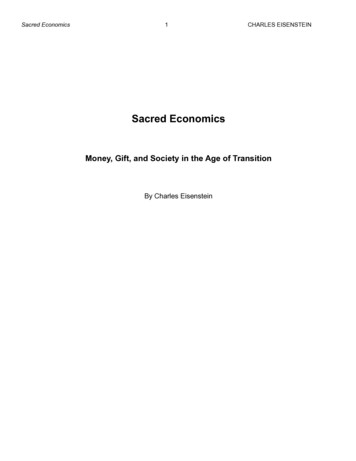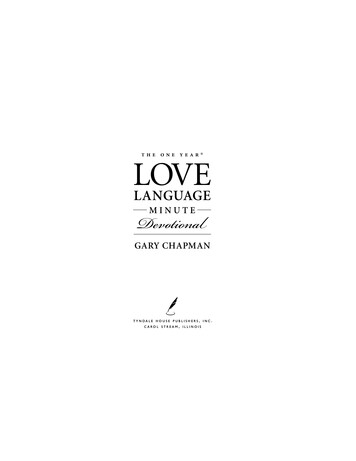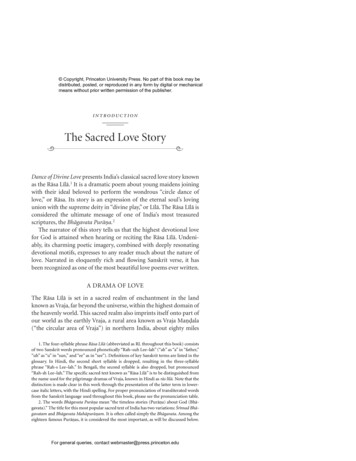
Transcription
Copyright, Princeton University Press. No part of this book may bedistributed, posted, or reproduced in any form by digital or mechanicalmeans without prior written permission of the publisher.int roduct ionThe Sacred Love Story Dance of Divine Love presents India’s classical sacred love story knownas the Rasa Lila.1 It is a dramatic poem about young maidens joiningwith their ideal beloved to perform the wondrous “circle dance oflove,” or Rasa. Its story is an expression of the eternal soul’s lovingunion with the supreme deity in “divine play,” or Lila. The Rasa Lila isconsidered the ultimate message of one of India’s most treasuredscriptures, the Bhagavata Purana.2The narrator of this story tells us that the highest devotional lovefor God is attained when hearing or reciting the Rasa Lila. Undeniably, its charming poetic imagery, combined with deeply resonatingdevotional motifs, expresses to any reader much about the nature oflove. Narrated in eloquently rich and flowing Sanskrit verse, it hasbeen recognized as one of the most beautiful love poems ever written.A DRAMA OF LOVEThe Rasa Lila is set in a sacred realm of enchantment in the landknown as Vraja, far beyond the universe, within the highest domain ofthe heavenly world. This sacred realm also imprints itself onto part ofour world as the earthly Vraja, a rural area known as Vraja Mandala(“the circular area of Vraja”) in northern India, about eighty miles1. The four-syllable phrase Rasa Lila (abbreviated as RL throughout this book) consistsof two Sanskrit words pronounced phonetically “Rah–suh Lee–lah” (“ah” as “a” in “father,”“uh” as “u” in “sun,” and “ee” as in “see”). Definitions of key Sanskrit terms are listed in theglossary. In Hindi, the second short syllable is dropped, resulting in the three-syllablephrase “Rah-s Lee–lah.” In Bengali, the second syllable is also dropped, but pronounced“Rah-sh Lee–lah.” The specific sacred text known as “Rasa Lila” is to be distinguished fromthe name used for the pilgrimage dramas of Vraja, known in Hindi as ras lila. Note that thedistinction is made clear in this work through the presentation of the latter term in lowercase italic letters, with the Hindi spelling. For proper pronunciation of transliterated wordsfrom the Sanskrit language used throughout this book, please see the pronunciation table.2. The words Bhagavata Purana mean “the timeless stories (Purana) about God (Bhagavata).” The title for this most popular sacred text of India has two variations: Srimad Bhagavatam and Bhagavata Mahapuranam. It is often called simply the Bhagavata. Among theeighteen famous Puranas, it is considered the most important, as will be discussed below.For general queries, contact webmaster@press.princeton.edu
Copyright, Princeton University Press. No part of this book may bedistributed, posted, or reproduced in any form by digital or mechanicalmeans without prior written permission of the publisher.2Introductionsouth of the modern capital city of Delhi.3 Vraja is described as a landof idyllic natural beauty, filled with abundant foliage heavy with fruitand bloom, roaming cows, and brightly colored birds singing melodiously. The Rasa Lila takes place in the earthly Vraja during the bountiful autumn season, when evenings abound with soothing scents andgentle river breezes. The following is a summary of the five chaptersof the Rasa Lila story from the Bhagavata’s tenth book.One special evening, the rising moon reached its fullness with a resplendent glow. Its reddish rays lit up the forest as night-blooming lotusflowers began to unfold. The forest during those nights was decoratedprofusely with delicate starlike jasmine flowers, resembling the flowingdark hair of goddesses adorned with flower blossoms. So rapturous wasthis setting that the supreme Lord himself, as Krishna, the eternallyyouthful cowherd, was compelled to play captivating music on his flute.Moved by this beauteous scene, Krishna was inspired toward love.Upon hearing the alluring flute music, the cowherd maidens,known as the Gopis,4 who were already in love with Krishna, abruptlyleft their homes, families, and domestic duties. They ran off to joinhim in the moonlit forest. Krishna and the Gopis met and played onthe banks of the Yamuna River. When the maidens became proud ofhis loving attention, however, their beloved Lord suddenly vanishedfrom their sight. The Gopis searched everywhere for Krishna. Discovering that he had run off with one special maiden, they soon foundthat she too had been deserted by him. As darkness engulfed the forest, the cowherd maidens gave up their search, singing sweet songs ofhope and despair, longing for his return. Then Krishna cleverly reappeared and spoke to them on the nature of love.The story culminates in the commencement of the Rasa dance. TheGopis link arms together, forming a great circle. By divine arrangement, Krishna dances with every cowherd maiden at once, yet eachone thinks she is dancing with him alone. Supreme love has nowreached its perfect fulfillment and expression through joyous dancingand singing long into the night, in the divine circle of the Rasa. Retir3. Vraja (commonly spelled and pronounced as the Hindi “Braj”) is a region coveringapproximately 1,450 square miles. At the heart of Vraja is the forest village of Vrindavana,the home of Krishna, and the city of Mathura, Krishna’s birthplace. Vrindavana is locatedbetween Delhi and the city of Agra (the home of the Taj Mahal, about 34 miles to thesouth). Throughout the Rasa Lila passage, Vraja is interchangeable with and often refers toVrindavana; see RL 1.18–19.4. Gopis is the plural of Gopi, “a female cowherd,” pronounced as the English word “go,”and “-pi,” as the English word “pea.”For general queries, contact webmaster@press.princeton.edu
Copyright, Princeton University Press. No part of this book may bedistributed, posted, or reproduced in any form by digital or mechanicalmeans without prior written permission of the publisher.Drama of Love3ing from the vigorous dancing, Krishna and the Gopis refresh themselves by bathing in the river. Then, reluctantly, the cowherd maidensreturn to their homes.A first reading of the story might lead one to believe that an obsessive love and passion for Krishna consumed the cowherd maidens.Their love could appear selfish and irresponsible, perhaps even unethical, as they abandoned their children, husbands, families, andhomes. A closer reading, however, reveals the idealized vision of thestory intended by its author and embraced and expounded upon byvarious traditions, in which the passionate love of the Gopis becomesthe model, even the veritable symbol, of the highest, most intense devotion to God.Contrary interpretations may arise because the vision of God presented herein is intimate, esoteric, and complex, containing elementsthat are familiar to both Western and Indic religious traditions, aswell as those that are unfamiliar. Certainly, one can observe howKrishna is acknowledged within the text as being a sovereign deity—a God of grace who teaches and redeems devoted souls, and who possesses other mighty and divine attributes, characteristics one wouldexpect to find in the divinity of Semitic traditions. But there is aunique vision presented in this dramatic poem—a vision of the innerlife of the deity. Here, God is celebrated as an adorable, eternallyyouthful cowherd boy who plays the flute and delights in amorousdalliance with his dearest devotees.In Indic traditions, the attainment of God is commonly believed tobe achieved through asceticism and renunciation. Yet such an unyielding, self-imposed renunciation for personal spiritual gain is not favored in the Bhagavata Purana, thus contrasting with the greatertradition out of which it arises. Rather, the text promotes renunciation that is naturally occurring and selflessly generated, spontaneously arising out of love. The cowherd maidens are considered tohave achieved the perfection of all asceticism and to have attained thehighest transcendence simply through their love and passionate devotion to God. This method of attainment is clearly distinct from therigorous asceticism and ceaseless search for world-denying transcendence for which much of religious India is known.Even though the divinely erotic tenor of the Rasa Lila story has delighted many, it has confused others. Some Western and even Indianinterpreters have assumed that the love exhibited between the cowherd women and their beloved Krishna is nothing more than a displayFor general queries, contact webmaster@press.princeton.edu
Copyright, Princeton University Press. No part of this book may bedistributed, posted, or reproduced in any form by digital or mechanicalmeans without prior written permission of the publisher.4Introductionof worldly lust.5 The author’s intention expressed in the text, however,is quite the contrary—the hearing or reciting of this story, he proclaims, will free souls from lust, the “disease of the heart.” Thereforesaintly voices from particular traditions within the Hindu complex ofreligion claim that its erotic imagery is an expression of the intensityand intimacy of divine love, rather than a portrayal of worldly passion. It is only a lack of enculturation and purity of heart on the partof the reader that prevents one from appreciating the Rasa Lila as thegreatest revelation of love.6Such traditions tell us that the true interpretation of the story requires a certain type of vision, the “eye of pure love,” prema-netra,which sees a world permeated by supreme love constantly celebratedby all beings and all of life.7 This eye beholds a realm of consummatebeauty and bliss, in which both the soul and intimate deity lose themselves in the eternal play of love. Prema-netra is said to be attainedwhen the “eye of devotion” is anointed with the “mystical ointment oflove,” an ointment that grants a specific vision of the “incomprehensible qualities of the essential form of Krishna.” 8 These traditions claimthat such qualities are revealed through the Rasa Lila text, which, with5. The various interpretations of the Rasa Lila story in the West as well as the East havea long and interesting history, not within the scope of this study. My interest here is to prepare the reader for appreciating the rich literary and religious dimensions of the text, andfor understanding aspects of the esoteric vision of its drama.6. The modern exponent of Vaishnavism who spread the tradition worldwide, Bhaktivedanta Swami Prabhupada (1896–1977), cautioned outsiders or nonpractitioners in theirreading of the stories of Krishna and the Gopis presented in his volume entitled, KRSNA:The Supreme Personality of Godhead (Los Angeles: Bhaktivedanta Book Trust, 1970),p. 188ff., a retelling of the Bhagavata’s tenth book, interpolated with his own grave warningsagainst misinterpretation. It is important to point out that the Swami presented these stories of the Bhagavata to the modern Western world, a world he encountered as having farmore promiscuity than the traditional Indian culture out of which he came. However, healso battled the dark side, within his own culture, of radical heterodox Sahajiya traditionsarising out of Bengal Vaishnavism. Such traditions had been influenced by tantric Buddhistpractices, in which practitioners, according to the Swami, lacked “requisite practice andspiritual discipline in devotional love,” sadhana-bhakti, and thus the humility for truly understanding the Bhagavata’s stories. At worst, some Sahajiya sects have attempted, to thisday, to reenact the divine acts of Krishna with the Gopis through sexual rituals. The perception of orthodox Vaishnavas is that Sahajiya practitioners dwell on the intimate divineacts of God prematurely, taking the teachings cheaply or sentimentally.7. The phrase prema-netra is taken from Krishnadasa Kaviraja’s great biographical andtheological exposition, Caitanya Caritamrta [CC] 1.5.21, in which he describes how the eyeof love can comprehend “the manifestations of divine essence,” or svarupa-prakasa.8. These phrases and ideas are taken from a verse of the Shri Brahma-Samhita (Madras:Sree Gaudiya Math, 1958), v. 5.38. Translations are mine. The Brahma Samhita (BrS) wasdiscovered in south India and canonized by the bhakti saint Caitanya in the sixteenth century. Caitanya’s discovery of the BrS is related in CC 2.9.237–241.For general queries, contact webmaster@press.princeton.edu
Copyright, Princeton University Press. No part of this book may bedistributed, posted, or reproduced in any form by digital or mechanicalmeans without prior written permission of the publisher.Drama of Love5Figure 2. The village of Barsana surrounded by beautiful Vraja landscape.Photograph courtesy of Helmut Kappel.its sensuous spirituality and innocent playfulness set in alluring poeticverse, ever beckons and attracts souls to enter into its drama.This is the vision of saints, which I myself do not claim to possess.As one who is Western-born and trained in the academic study of religion, having had the privilege of living in India among saintly practitioners and participating with them in devotional practices, however, Iam perhaps in a position to present this work to those both outsideand within these traditions. My intention is to illuminate a particulartradition’s special vision of such an important text, thereby facilitatingfurther dialogue with other world traditions of theistic mysticism.This work, then, explores a vision of intimacy with the supremedeity as presented by the Rasa Lila text and elaborated upon by recognized sages possessing this eye of love. The translation of the story,found at the heart of the book, is intended to be literal and faithful,striving to capture some of the exquisite poetic beauty and profoundtheological expression of the original. Within the introductory andcommentarial sections that frame the translation, deeper or morehidden meanings of its verses are presented through general discussion and specific verse comments. It is hoped that these key teachingsand traditional commentaries, from one of the most influential traditions interpreting the text, will enrich the reading of this masterpieceof world literature and enhance its appreciation.For general queries, contact webmaster@press.princeton.edu
Copyright, Princeton University Press. No part of this book may bedistributed, posted, or reproduced in any form by digital or mechanicalmeans without prior written permission of the publisher.6IntroductionSACRED LOVE STORIESAmong all love stories of the world, only a few are considered divinerevelation. Certain mystical traditions honor a particular love story astheir ultimate vision of supreme love. These stories exhibit eroticlongings, often in the feminine voice, as can be observed in the following similar expressions of passion presented in two very differentscriptural texts, the first biblical and the second puranic: “Let him kissme with the kisses of his mouth!” (Song of Solomon 1.2), and “Pleasebestow upon us the nectar of your lips!” (Rasa Lila 3.14). These explicitly romantic expressions have been perceived as the voice of thesoul in its passionate yearning for the divine. Devout mystics andsaintly persons have shown, through their own elaborate worship andinterpretation of these stories, that the desire to love God intimatelyand passionately lies deeply within the human heart. These specialstories can thus be called sacred love stories.God as the divine lover is not as foreign to us in the West as perhaps we might assume. According to a sociological study conductedseveral years ago, a surprising 45 percent of Americans can “imagineGod as a lover.”9 Intimate love of the deity, therefore, is apparentlyneither remote nor uncommon, nor is it seen as existing only in thepast among people of different cultures and distant places. That itspresence is concealed may be due to the confidential nature of theexperience of intimacy in relation to the sacred; perhaps the phenomenon is preserved at an understated and private level of humanreligious experience. Though it would be impossible to determine thepervasiveness of this religious phenomenon, or the type and depth ofexperience, it is clear that humans throughout the ages have desiredintimacy with the divine.Sacred love stories, in many ways, appear to present the passionatelove shared between a lover and a beloved. They disclose explicit conceptions or allegorical depictions of a transcendent realm of love, inwhich a supreme deity and affectionate counterpart—either a devoutsoul or divine personage—join together in various phases of amor9. See Wade Clark Roof and Jennifer L. Roof, “Images of God among Americans,” Journal for the Scientific Study of Religion 23, no. 2 (June 1984): 201–205. The summarized results of this study received attention from the popular magazine Psychology Today (June1985): 12, and the nationwide newspaper USA Today (May 30, 1985). The latter focusedspecifically on the content of “God as a lover” from Psychology Today, which was highlighted in its section called “Life,” under “Lifeline: A Quick Read on What People Are Talking About.”For general queries, contact webmaster@press.princeton.edu
Copyright, Princeton University Press. No part of this book may bedistributed, posted, or reproduced in any form by digital or mechanicalmeans without prior written permission of the publisher.Sacred Love Stories7ous, even erotic intimacy. The purest and highest attainable love associated with these stories occurs only when the recipient of the soul’sexclusive devotion is the supreme Beloved. Such stories have inspiredthe human heart to reach for superlative and pure expressions of love.It is not surprising that generations of religious writers, in numerousworks, have developed and embellished essential themes drawn directly from these sacred stories.In the Western world, the biblical book Song of Solomon, alsoknown as the Song of Songs, relating the passionate love between aking and queen, has been regarded by many as a sacred love story.10This story has become foundational for various forms of Jewish mysticism, such as the Kabbalah. The rich and erotic words of the Songreveal the union of lover and beloved who symbolize, for these traditions, the divine “queen” and “king” within the godhead. Additionally,the Song of Solomon has been a profound source of inspiration forCatholic love mysticism and Christian piety in general. The feminineand masculine voices of the text have represented the loving relationship between the soul and God, respectively, in which the soul becomes the “bride” and Christ the divine “bridegroom.”Similarly, traditions of Islamic love mysticism have drawn upon anancient Arabic tale that allegorizes the soul’s capacity to be utterly intoxicated with love for God. The story of Layla and Majnun describesMajnun’s uncontainable madness of affection for his beloved Layla,from early boyhood throughout his life, and even beyond life.11 Although there has never been complete agreement on the sacred value ordegree of holiness of these particular love stories, often because of theexplicit sensuality and erotic imagery of their content, there is no doubtthat powerful traditions of love mysticism have based their religious visions on such texts. Sacred love stories are indeed stories of romanceand passion, but they are often seen as much more than that. They areregarded by many as sacred expressions of the innermost self that canlift the human spirit into the highest realms of intimacy with the deity.10. The Song of Songs is readily accessible in any complete translation of the HebrewBible. It has also received scholarly attention as a text apart from its biblical context, and onefinds, to this day, attempts to translate its especially rich poetry into English. For example,see The Song of Songs: A New Translation, by Ariel Bloch and Chana Bloch (Berkeley: University of California Press, 1995) with elaborate introduction and commentary to the text;and The Song of Songs: A New Translation, by Marcia Falk (San Francisco: Harper, 1990)with illustrations and introduction to the translation. Both editions present the originaltext in Hebrew script.11. See Nizami’s The Story of Layla and Majnun, translated from the Persian and editedby Dr. Rudolf Gelpke (New Lebanon, N.Y.: Omega Publications, 1997).For general queries, contact webmaster@press.princeton.edu
Copyright, Princeton University Press. No part of this book may bedistributed, posted, or reproduced in any form by digital or mechanicalmeans without prior written permission of the publisher.8IntroductionINDIA’S SONG OF SONGSThe love poem of the Rasa Lila could easily be regarded as the “Songof Songs” of ancient India. Several Vaishnava sects—those traditionswithin the Hindu complex of religion whose worship is centeredupon the supreme deity Vishnu, also known as Krishna—single outthe story of the Rasa Lila, claiming it to be the essence of all lilas.12 Asthe Song of Solomon has been elevated to the highest status above allother biblical books by many Jewish and Christian mystics, and thushas become known as the “Song of Songs,” the Rasa Lila also has beenhonored as the “essence of all lilas” and the “crown-jewel of all acts ofGod” by several Vaishnava traditions, for which it functions as the ultimate revelation of divine love.13The enchanting Rasa Lila has had great influence on the culture andreligion of India, perhaps even more than the Song of Songs has hadon the Western world. For over a thousand years, poets and dramatistshave continually told its story, often creating new stories that expandupon particular themes of the Rasa Lila. Artists and dancers from a variety of classical Indian schools have attempted to capture the beautyand excitement of various events within the story through pictorialrenderings and interpretative dance performances. In modern times,in the West and in India, literary and artistic creations continue to begenerated directly from this great work. The passionate love of theGopis for their beloved Lord Krishna has epitomized sacred love in Indian civilization, and to this day provides the richest source of poeticand religious inspiration for Hindu love mysticism.Another Sanskrit love poem, the Gita Govinda or “Song ofGovinda,” by Jayadeva, has been referred to as the song of songs ofIndia by some Indian and Western scholars.14 This twelfth-centurywork concerning Govinda, who is Krishna, and his most beloved Gopi,12. The Vaishnava sects of Vallabha, Caitanya, and Radhavallabha celebrate the Rasa Lilaas the greatest lila.13. Krishnadasa Kaviraja uses the words lila-sara (“essence of lilas”) to describe the RLin C 2.21.44. Visvanatha Cakravartin describes the Rasa Lila as sarva-lila-cuda-mani in hiscommentary to the first verse of the RL.14. The first translation of Jayadeva’s work was by the nineteenth-century Britishscholar Sir Edwin Arnold, and its title clearly makes the claim: The Indian Song of Songs(London, 1875). Indian scholars have echoed Arnold’s claim and accepted this work’s association with the biblical text; see Kangra Paintings of the Gita Govinda, by M. S. Randhawa(Delhi: National Museum, 1963), p. 13. Western scholars of the Song of Solomon have alsodrawn parallels between the two works. See Song of Songs: A New Translation with Introduction and Commentary, by Marvin H. Pope (New York: Doubleday, 1977), especially the section entitled “Gita-Govinda, the So-Called ‘Indian Song of Songs,’” pp. 85–89.For general queries, contact webmaster@press.princeton.edu
Copyright, Princeton University Press. No part of this book may bedistributed, posted, or reproduced in any form by digital or mechanicalmeans without prior written permission of the publisher.India’s Song of Songs9Radha, presents a tempting parallel to the Song because of the singularhero and heroine between whom a passionate love tale ensues. By contrast, the Rasa Lila portrays a group of heroines, though there is specialattention given in one chapter to a favored Gopi, who is assumed bysome Vaishnava sects to be Radha.15 Furthermore, the Rasa Lila doesnot reach the erotic intensity of the Gita Govinda and the Song ofSongs. Whereas the general tone of the Rasa Lila is more amorous orromantic, the overall tone of both the Song and Jayadeva’s work is considerably more sensuous, if not explicitly or metaphorically sexual.Despite these similarities of Jayadeva’s work to the biblical song, theRasa Lila deserves recognition as India’s song of songs in light of its literary-historical and scriptural parallels. Historically, the Gita Govindaappears centuries later than the Bhagavata. In fact, the Rasa Lila is referred to repeatedly in a refrain within the second part of Jayadeva’sstory (vv. 2–9). Similarly, the Song of Solomon functions as the sourceof much literary activity, as we find with the Spanish mystic poet, Johnof the Cross, who himself derived direct inspiration from the Song forhis poetry describing the spiritual marriage of the soul and Christ.The Song of Solomon has had significant influence on Western religious traditions, especially on Jewish and Catholic forms of mysticism, in which it has received unmatched attention. The Rasa Lilahas also had widespread cultural and religious recognition, particularly within certain bhakti or devotional traditions of Vaishnavism.Whereas appreciation of the Gita Govinda has been primarily concentrated in eastern regions of India such as the states of Bengal andOrissa, the Rasa Lila has had a pan-Indian presence.Perhaps the most compelling argument for claiming the Rasa Lilato be India’s song of songs would be the powerfully supportive scriptural contexts in which each text is found. Although Jayadeva’s poemis directly inspired by the Bhagavata, it is an independent poem, lacking the greater literary and scriptural context that the Bhagavata andthe Hebrew Bible provide for the Rasa Lila and the Song of Solomon,respectively.16 One could argue that the biblical Song is perhaps evenmore dependent upon its context than the Rasa Lila is on its scripturalsetting, because of the absence of any explicit religious statements in15. The Gita Govinda is the first text to powerfully establish the name, identity, and roleof Radha as Krishna’s favorite Gopi, stimulating a great deal of later poetic activity, as wellas influencing the way viewers and readers perceive Radha’s role in the RL text itself.16. The Gita Govinda compensates for a lack of scriptural context or authority by providing a theological introduction: the first chapter is devoted primarily to singing thepraises of the various “divine descents,” or avatara forms, of Krishna and Vishnu.For general queries, contact webmaster@press.princeton.edu
Copyright, Princeton University Press. No part of this book may bedistributed, posted, or reproduced in any form by digital or mechanicalmeans without prior written permission of the publisher.Figure 3. Ivory miniature painting of Radha and Krishna.Artist unknown; from the private collection of the author.For general queries, contact webmaster@press.princeton.edu
Copyright, Princeton University Press. No part of this book may bedistributed, posted, or reproduced in any form by digital or mechanicalmeans without prior written permission of the publisher.The Ultimate Scripture11the Song. The story line of the Rasa Lila, on the other hand, is a continuation of earlier events from within the greater Bhagavata story,and there is notable material prior and subsequent to the Rasa Lilathat anticipates or reflects upon its story. Moreover, much of the theological content of the Bhagavata and references to many of its surrounding stories are engaged within the Rasa Lila itself.It is on the basis of this dependence on context that the poetic lovestory of the Rasa Lila gains, as does the Song of Songs, its sacred auraand religious authority. Furthermore, each text, as a rarified sacredlove story, has become the jewel in the center of its own scriptural setting. In light of these significant parallels, the Rasa Lila may truly beconsidered the song of songs of India.BHAGAVATA AS THE ULTIMATE SCRIPTUREThere are eighteen Puranas, or collections of “ancient stories,” and Indian and Western scholars alike have recognized that among them,the Bhagavata stands out. Dozens of traditional commentaries havebeen written on the Bhagavata, whereas other Puranas have receivedjust one or two, if any.17 The Bhagavata Purana (BhP) itself declaresthat it is “the Purana without imperfection” (amala purana) and themost excellent of all Puranas.18Modern Indian scholars acknowledge the greatness of the text. S.K. De writes that “The Bhagavata is thus one of the most remarkablemediaeval documents of mystical and passionate religious devotion,its eroticism and poetry bringing back warmth and colour into religious life.”19 Specifically referring to the tenth book of the Bhagavata,A. K. Majumdar states: “the most distinguishing feature of the Bh.P. isthe tenth canto which deals with the life of Krsna, and includes therasa-lila, which is unique in our religious literature.”20 Western scholars have also identified the synthetic nature of the text. Daniel H. H.Ingalls writes: “The Bhagavata draws from all classes, as it does fromall of India’s intellectual traditions. It does this without being at all17. Edwin F. Bryant, in his introduction to his translation of the tenth book of the Bhagavata, has counted as many as eighty-one currently available commentaries on this part ofthe text. See his work Krishna: The Beautiful Legend of God (New York: Penguin, 2004), p. xii.18. See BhP 12.13.17–18.19. S. K. De, Early History of the Vaisnava Faith and Movement in Bengal (Calcutta:Firma K. L. Mukhopadhya, 1961), p. 7.20. A. K. Majumdar, Caitanya: His Life and Doctrine (Bombay: Bharatiya Vidya Bhavan,
The Sacred Love Story Dance of Divine Love presents India’s classical sacred love story known as the Rasa Lila.1 It is a dramatic poem about young maidens joining with their ideal beloved t

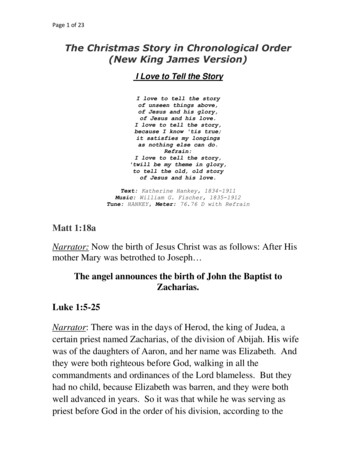

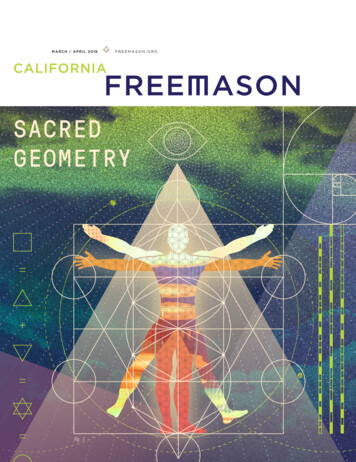
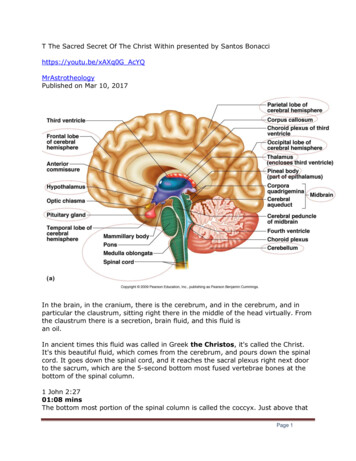
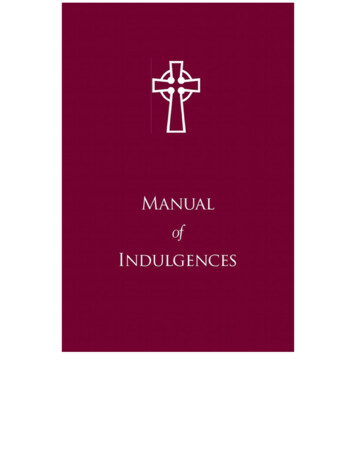
![The Book of the Damned, by Charles Fort, [1919], at sacred .](/img/24/book-of-the-damned.jpg)
